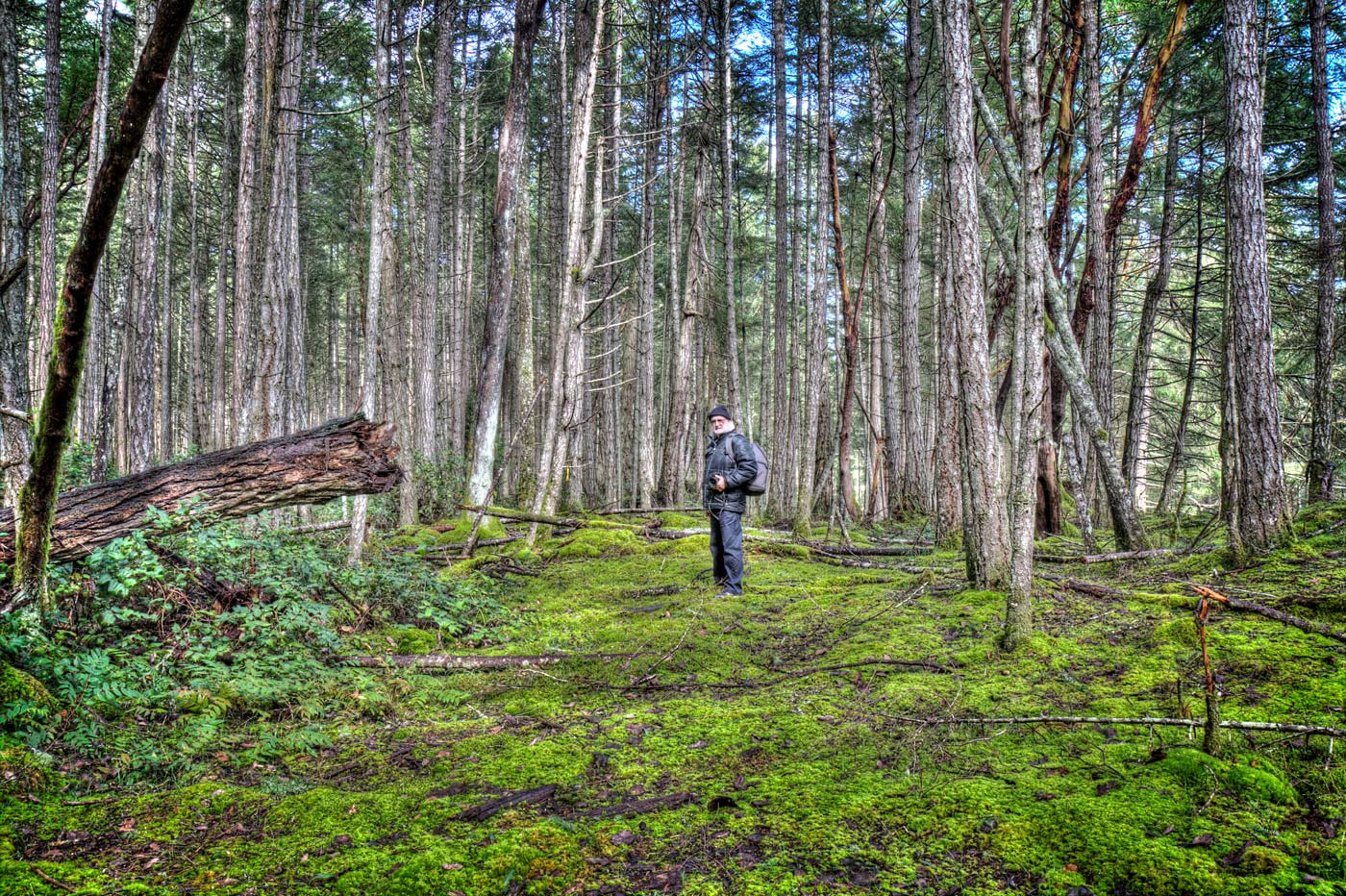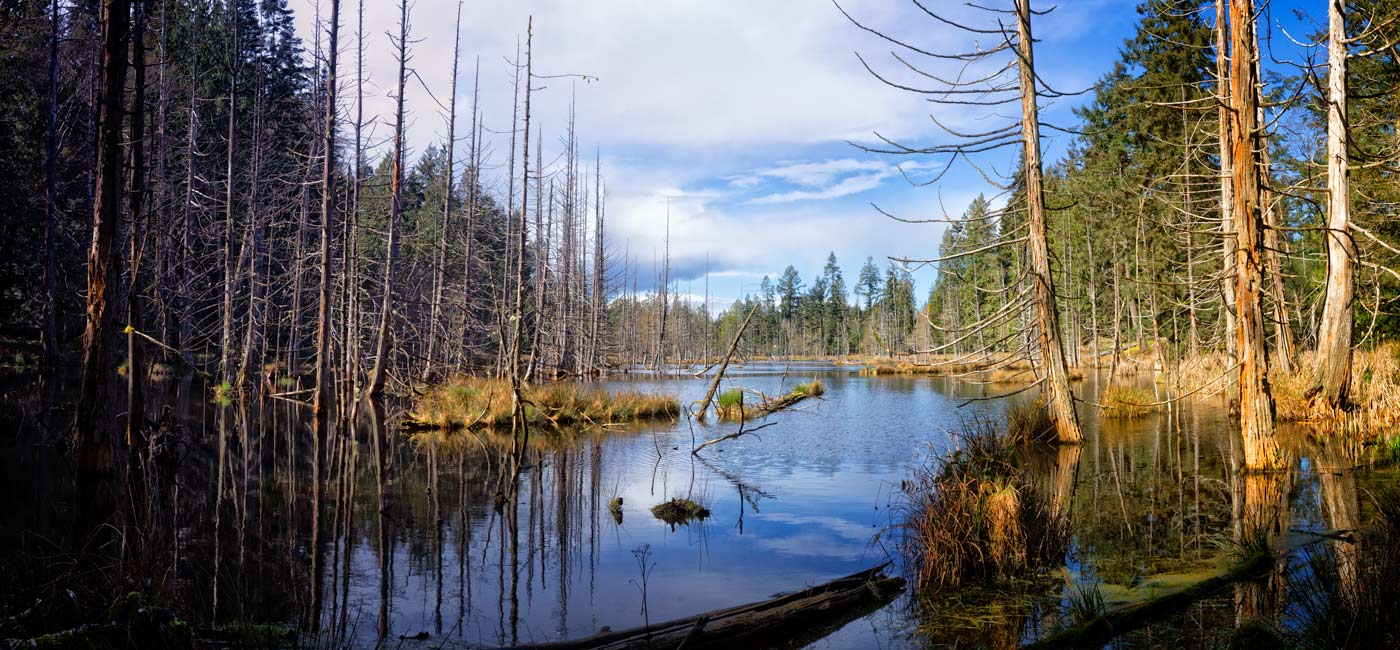My earliest memories of life were here on the West Coast of Canada. That was in the 40’s and early 50’s when Vancouver was a small place and Langley, where I have my first memories, was little more than a few stores and to walk out of town took two minutes. My Dad took me on picnics to the sea shore, we went fishing in the Strait of Georgia, and we cottaged on Bowen Island and the Tsawassen Bluffs when they were farmers fields. I used to play in Queen’s Park in New Westminster when it was wild bush and huge trees. To this day, I could not live away from the ocean or the forest. For me, to be on the water or to be in the woods, brings peace and a sense of joy beyond description.
We have a family cottage on an island near Vancouver where I have both water and trees in abundance. Last month I was able to spend three glorious days there. And for those three days I lost myself in the forest. Our island is about ten miles long and two wide. There are no cars, there is no electricity, no running water and few people. One can truly get lost in the woods.
I loaded my camera gear each morning and set out on a different route and wandered in the trees. The sun filtered down to the forest floor, the wind whispered in the tree tops, and the leaves and branches crunched under foot. I was at peace with nothing to do but walk and take pictures.
I have talked here before about the difficulty of taking pictures of a forest; the trees get in the way. So I spent three days trying to create images that would convey what I was feeling as I picked my way along deer trails and across forest meadows. It was not easy. Tripods are a pain but I am coming to accept that they are a necessary part of photography if you have the time to use them. But that makes travel slow and awkward. If you collapse the tripod every time you move the work is excessive. But if you don’t, movement through the under brush is very difficult.
It’s dark on the forest floor. If you want a low ASA setting for the best images then very slow shutter speeds will be a necessity. Because the trees are close and recede into the distance you want depth of field. So a wide aperture is not an option. And there is the problem of contrast. The forest is dim except where the sun can settle through the branches to the moss and leaves below. Then it is brilliant. This is a situation that demands the widest dynamic range. And this of course means HDR: the taking of multiple images at different exposure settings to capture all of the shadow and highlight detail. Later, in post processing the images are processed together to get the maximum detail in all areas of the picture.
There is a great joy being left with one’s hobby to wrestle with the problems of light and dark and the limitations of the machinery used to capture the light. No phones, to noise, no distraction: pure photography. It is not very often I am able to luxuriate in so much time just making pictures. I came back from the woods all fired up about photography.
Man is a strange creature. Places like this are so fragile and so precious. I can’t imagine what motivates people to destroy this heritage we are given. And yet, I understand that the government has issued timber permits allowing for the “harvesting” of this sacred place. It is within sight of Vancouver, close, accessible, and endangered. We need logging, and I can understand it in the distant back country. But here, in our own front yard? We are indeed strange creatures.
There are more images from this trip. I will add them, as time goes by, to my BC portfolio for you to enjoy. But it takes time. Actually creating the image file is only part of the process. The rest comes in chosing the files I want to work on and then taking a couple of evenings on each to see what I can bring out in them. Even after I have chosen the one I want to work on it has only a 50-50 chance of ever being completed. Problems are found: color balance is impossible, focus is not acceptable, contrast is simply too much or too little. And sometimes I find that I just don’t like the picture.
Everything below the trees is covered in moss. The forest floor is thick with it except where the deer walk. It is thick and soft and it softens the forest sounds to a murmur.
One advantage of tripods and remote triggers is that you can take pictures of yourself! I have all my gear, two cameras, three lenses, rain gear, batteries, memory cards, tripod, all on my back. Oh, yes, and food and water. No maps. I know the island and I can orient myself using the time and position of the sun. The island is narrow so you are never far from the ocean and familiar landmarks.








